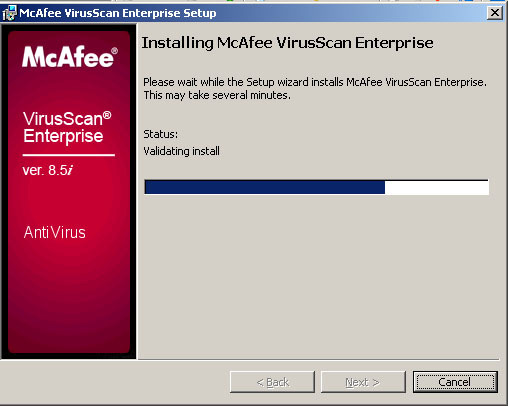

- #INSTALL MCAFEE ANTIVIRUS VMWARE NOT DOWNLOADING INSTALL#
- #INSTALL MCAFEE ANTIVIRUS VMWARE NOT DOWNLOADING UPDATE#
- #INSTALL MCAFEE ANTIVIRUS VMWARE NOT DOWNLOADING UPGRADE#
- #INSTALL MCAFEE ANTIVIRUS VMWARE NOT DOWNLOADING TRIAL#
- #INSTALL MCAFEE ANTIVIRUS VMWARE NOT DOWNLOADING PASSWORD#
#INSTALL MCAFEE ANTIVIRUS VMWARE NOT DOWNLOADING INSTALL#
Install the vShield Endpoint component and wait for verification the install has completed, you can view the various tasks from the vSphere client.Browse to your host(s) and select, using the Inventory menu down the left and view the summary from the right hand side. I prefer to use the latter, just to verify things from the vShield Manager point of view. You can perform this step from either the vSphere Client or vShield Manager.You can review the best practices guide from here Applying the 5.1.2-997359 vShield Manager PatchĪfter vCNS (vShield Manager) was upgraded to 5.1.2a, it was time to install the vShield Endpoint component onto each ESXi host.Upgrading to vCloud Networking and Security 5.1.2a best practices (2044458).There are a couple of VMware KB articles to support this process.
#INSTALL MCAFEE ANTIVIRUS VMWARE NOT DOWNLOADING UPDATE#
#INSTALL MCAFEE ANTIVIRUS VMWARE NOT DOWNLOADING UPGRADE#
The upgrade process reboots vShield Manager, so you might lose connectivity to the vShield Manager.

#INSTALL MCAFEE ANTIVIRUS VMWARE NOT DOWNLOADING PASSWORD#
#INSTALL MCAFEE ANTIVIRUS VMWARE NOT DOWNLOADING TRIAL#
Therefore, after research and a trial period, I deployed the agentless solution and I thought I’d document the process and quirks\issues I found along the way, in case a future engagement involves this or a similar agentless solution. You can also manage the solution from the McAfee ePolicy Orchestrator software. The benefits are clear, with increased virtual desktop performance and anti-virus updates and scanning storms, a thing of the past. This dramatically reduces the load on the host in terms of memory and CPU, and also the Windows virtual desktop, as there’s no requirement for the agent to be installed in Windows.

With the agentless solution, a virtual security appliance is run on each host, and performs all the scanning, plus definition and policy updates. However they own the license for the agentless solution, and thought this would a suitable time to investigate this, to optimize the environment and provide the best performance, whilst continuing to protect their virtual desktops. The customer previously used a standard McAfee agent solution, with the agent installed in every Windows virtual desktop. Over the last two months, I’ve been working on a VDI refresh engagement, involving technologies such as VMware Horizon View 5.2, vCNS (vShield) and McAfee Move, agentless solution.


 0 kommentar(er)
0 kommentar(er)
